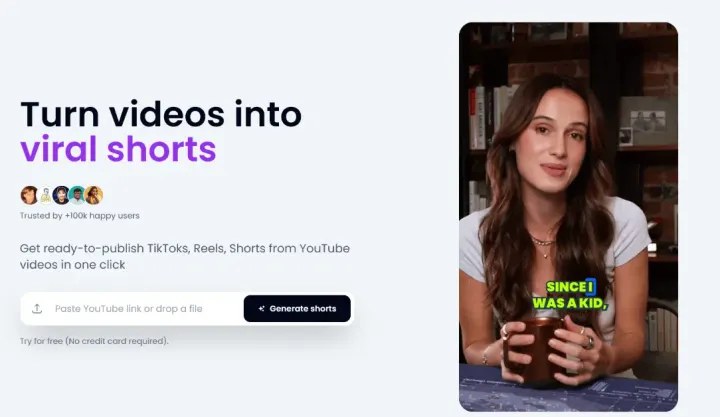5 Steps to Choose the Right Online Course for Your Goals
Learn how to select the best online course for your personal and professional growth with clear goals, comparisons, and evaluations.

Choosing the right online course can save you time, money, and stress while boosting your career or personal growth. Here’s how to find the perfect course:
- Set Clear Goals: Define what you want to achieve, using tools like SMART goals to stay focused.
- Compare Course Options: Research platforms (e.g., Coursera, LinkedIn Learning) and filter by skill level, duration, and reviews.
- Check Quality: Assess instructor qualifications, accreditation, and student feedback.
- Match Your Learning Style: Pick a format (self-paced, live, hybrid) that fits your preferences and schedule.
- Evaluate Costs: Compare pricing, look for free trials, and consider long-term value like certifications or career advancement.
Quick Comparison of Popular Platforms
| Platform | Focus Area | Features | Starting Price |
|---|---|---|---|
| Coursera | University-level courses | Accredited certificates, structured curriculum | $9.99 (Guided Projects) |
| LinkedIn Learning | Professional skills | Industry expert instructors, skill paths | $29.99/month |
| Upskillist | Practical skills | Interactive classes | $39.99/month |
Start by identifying your goals, then use these steps to find a course that aligns with your needs and budget.
Related video from YouTube
Step 1: Set Clear Learning Goals
To pick the right online course, you need to start with clear learning goals. Research from Gail Matthews at Dominican University shows that people who write down their goals are 42% more likely to achieve them. Without defined objectives, you risk choosing a course that doesn’t meet your needs.
Define Personal and Career Aims
Begin by evaluating where you are now and where you want to go. Tools like the Holland Occupational Themes can help pinpoint your career interests and match them with relevant courses. Use the SMART framework to create goals that are:
- Specific: For example, learn SEO basics.
- Measurable: Complete three projects as part of the course.
- Achievable: Commit to five hours of study each week.
- Relevant: Focus on improving digital marketing skills.
- Time-bound: Finish the course within three months.
"Setting clear and achievable professional goals is crucial in steering your career journey", says Maggie Henley, MBA, Career Specialist at Purdue Global's Center for Career Advancement. "Think of your goals as the fuel that motivates you."
Separate Short-Term and Long-Term Goals
Breaking your goals into short- and long-term categories can make the path forward clearer. Short-term goals, like earning a certification or creating a portfolio, serve as stepping stones to bigger achievements, such as switching careers or gaining professional recognition.
Keep in mind that your goals might evolve over time. Being flexible will help you stay on track. Once your goals are set, you’re ready to dive into the next step: finding and comparing courses that align with your ambitions.
Step 2: Look at and Compare Course Options
With your goals in mind, it’s time to explore courses that fit your needs. The world of online learning offers countless options, so comparing them carefully is key.
Explore Reliable Platforms
Here’s a quick look at some popular online learning platforms to help you decide:
| Platform | Focus Area | Features | Starting Price |
|---|---|---|---|
| Coursera | University-backed courses | Accredited certificates, structured curriculum | $9.99 (Guided Projects) |
| LinkedIn Learning | Professional skills | Industry expert instructors, skill paths | $29.99/month |
| Upskillist | Practical skills | Interactive classes | $39.99/month |
Choosing a trusted platform ensures a smoother learning experience. Most platforms let you filter courses by:
- Skill level (beginner, intermediate, advanced)
- Duration
- Ratings and reviews
- Relevance to your goals
Dig Into Course Details
Take a closer look at the course syllabus to understand the objectives. Check if there are any prerequisites and see if the format suits your learning style - whether it’s video lectures, hands-on projects, or something else. Make sure the time commitment works for your schedule. For example:
- Coursera: Professional certificates often require around 10 hours per week over several months.
- Udemy: Offers more flexible, self-paced courses, typically 2–20 hours in total.
Most platforms offer free trials or previews, so you can test the teaching quality before committing.
After narrowing down your options, the next step is ensuring the courses are credible and worth your time.
Step 3: Assess Course Quality and Instructor Credibility
Making sure a course meets industry standards and delivers the results you're looking for is key to achieving your goals.
Verify Instructor Qualifications
Check if the instructor has the right mix of academic credentials, real-world experience, and a strong teaching history. Look for signs that they stay active in their field, like publishing articles, speaking at events, or contributing to industry projects. This shows they're up-to-date with current trends and practices.
Look for Accreditation or Certifications
Accreditation can signal that a course is legitimate and meets quality standards. Here's what to keep an eye on:
| Type | What to Look For | Why It Matters |
|---|---|---|
| Recognized Accreditation | Approval from DEAC, CHEA, or industry groups | Indicates quality and relevance to careers |
Employers often value certifications from accredited courses when hiring or promoting. Organizations like the Distance Education Accrediting Commission (DEAC) and the Council for Higher Education Accreditation (CHEA) are well-respected in this area [3].
Read Student Reviews and Feedback
When diving into reviews:
- Look for detailed, recent feedback that highlights specific course strengths or areas for improvement.
- Pay attention to comments about the instructor's involvement and whether the course delivers practical learning outcomes.
Be cautious of low ratings, outdated content, disengaged instructors, or vague, overly positive reviews that seem suspicious.
Once you're confident in the course's credibility, you can move on to see if its structure fits your learning style and schedule.
Step 4: Evaluate Course Structure and Suitability
Once you've verified the course's credibility, it's time to ensure the format aligns with your learning preferences and schedule.
Match the Format to Your Learning Style
Pick a course format that fits how you learn best - whether you're a visual, auditory, or hands-on learner. Did you know that about 65% of people learn visually? Here's a quick breakdown of formats and who they work best for:
| Format Type | Ideal For |
|---|---|
| Self-Paced | Independent learners or those with tight schedules |
| Live Classes | Learners who thrive on interaction and structure |
| Hybrid | Those who prefer a mix of independence and guidance |
Evaluate Time Commitments and Flexibility
Balancing work and education is no small feat - just ask the 14 million people doing it right now. To make it work, you'll need to assess the time demands of your course:
- Check weekly requirements: How many hours will you need for lectures, assignments, and projects?
- Look for flexible options: Are there adjustable deadlines to fit your schedule?
- Offline access: Can you download materials to study on your own time?
Review Supplementary Resources
Extra materials can make a big difference in how well you grasp the content. Look for courses that include:
- Downloadable guides or workbooks
- Online forums or study groups for collaboration
- Tools to track your progress
- Content that works seamlessly on mobile devices
Courses that blend different learning tools often cater to a wide range of preferences.
"Understanding and applying your learning style is the first step toward excelling in online school." - ICON School
Once you're confident the course structure works for you, it's time to weigh whether the cost aligns with the value it provides.
Step 5: Evaluate Costs and Course Value
Picking a course that fits your budget is just as important as finding one that matches your learning goals and style. Here's how to make a smart choice without overspending.
Compare Pricing Options and Plans
Online learning platforms often provide various payment options to suit different budgets. Keep an eye out for:
- Free trials or the ability to audit courses before committing
- Choices between monthly subscriptions or one-time payments
- Options for certificate-only fees versus full course access
- Availability of financial aid
- Bundle deals for multiple courses
Assess the Value of the Course
Think about both the short-term and long-term benefits when deciding if a course is worth the cost. Consider factors like:
- Whether it could lead to higher salaries
- Opportunities for career advancement
- How well-respected the certification is in your field
- Chances to network with industry professionals
- How you can apply the knowledge in your current job
Tips to Cut Costs
There are plenty of ways to save money while still getting a quality education. Here are a few ideas:
- Take advantage of free trials or audit courses before paying
- Check if your employer offers tuition reimbursement programs
- Look for scholarships or grants specific to your field
- Wait for seasonal discounts or group offers
- Opt for bundled courses or annual subscriptions if available
Did you know that about 84% of college students receive some kind of financial aid? It’s worth exploring all your options. Remember, spending on education is often more than just a cost - it’s an investment in your future.
Conclusion: Making a Smart Choice
Choosing the right online course is an important decision that can shape your learning experience and career growth. By taking a thoughtful approach, you can pick a course that aligns with your goals and sets you up for success. The steps outlined here are designed to help you make a well-informed decision.
Online education should cater to both your short-term needs and long-term aspirations. It's especially suited for independent learners and those comfortable with digital communication, so understanding your learning style is key [2]. Use this guide to weigh your options carefully and make a choice that truly fits your needs.
Here are some key factors to consider before making your final decision:
- Course Credibility: Check for accreditations and the qualifications of instructors to ensure you're enrolling in a program that's recognized and respected [1].
- Learning Format: Determine if the course structure matches your preferred learning style, whether you thrive in collaborative settings or prefer working independently [2][3].
- Time Commitment: Make sure the course schedule aligns with your availability.
- Value: Assess whether the course offers a good return on investment in terms of the skills you'll gain and the career opportunities it might open up.
"Modern Learning Management Systems can adjust course content based on individual learning styles, enhancing the learning experience" [4].
Take the time to evaluate your options against these criteria. The right choice can help you achieve your goals, while the wrong one can cost you both time and resources.
FAQs
Here are answers to common questions to help you make an informed choice.
How do I find a good online course?
When looking for an online course, keep these points in mind:
Accreditation and Reputation
Check if the course is accredited by recognized organizations like DEAC. This ensures the course meets quality standards and is respected by employers [1].
Course Design and Schedule
Look for courses that fit your learning style. Many offer self-paced options, flexible schedules, interactive assignments, and resources like discussion forums or access to instructors [4].
Cost and Benefits
Consider the overall value by looking at:
- Payment plans or financial aid availability
- Additional perks like certifications
- Potential for career growth [5]
Ultimately, the right course depends on your goals, learning preferences, and availability. Comparing options and reading student reviews can help you choose wisely [1].




